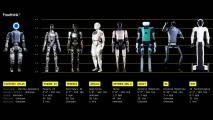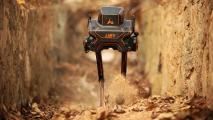We bulk up when we pump iron. That’s because the stress from weights helps our muscles grow stronger. Soft robots could one day get more muscular, too — thanks to a new soft gel that becomes tougher when subjected to vibration.
The budding field of soft robotics often takes its inspiration from how living organisms move and respond to their environment, allowing soft robots greater flexibility than classic “stiff” robots.
This robotic muscle-growing gel, created by Zhao Wang and his colleagues at the University of Chicago, brings a new level of flexibility to soft robots.
When we exercise, we can certainly build up our muscles. We want to mimic that process so when we exercise the artificial muscle, it can increase its modulus, its stiffness.
Zhao Wang
Wang embedded zinc oxide nanoparticles into a mixture of cellulose (the main material in wood and plant fibers) to produce a gel that could become an artificial muscle for soft robots.
When the team rapidly vibrated the mixture, using a system designed to test designs for automobiles and aircraft, they found that the nanoparticles became charged. The charged particles created new connections, transforming the material into a polymer, reports New Scientist.
The idea that robots could improve or repair themselves over time has become a topic of interest recently. A University of Pennsylvania team recently looked to ice as a regenerative material that robots could use to self-repair in space. And a University of Colorado Boulder physicist took inspiration from fireflies to understand how bio-inspired robot swarms could learn to respond to each other. There are even steps toward making a robot that can evolve on its own.
This new muscle-like gel may present a new way that soft robots could expand their capabilities over time — by becoming stronger.
Wang’s findings, published in the journal Nature Materials, show that the “artificial muscle” can grow 66 times stronger when it is mechanically compressed.
“When we exercise, we can certainly build up our muscles,” Wang told New Scientist. “We want to mimic that process so when we exercise the artificial muscle, it can increase its modulus, its stiffness.”
(Correction: Some of us build up muscles when we exercise. I certainly don’t.)
Currently, the gel only stiffens, but Wang hopes to find a way to reverse the feature and create a gel that hardens and relaxes — offering more versatile operations for soft robots. Maybe the gel-bot should try yoga.
We’d love to hear from you! If you have a comment about this article or if you have a tip for a future Freethink story, please email us at [email protected].





